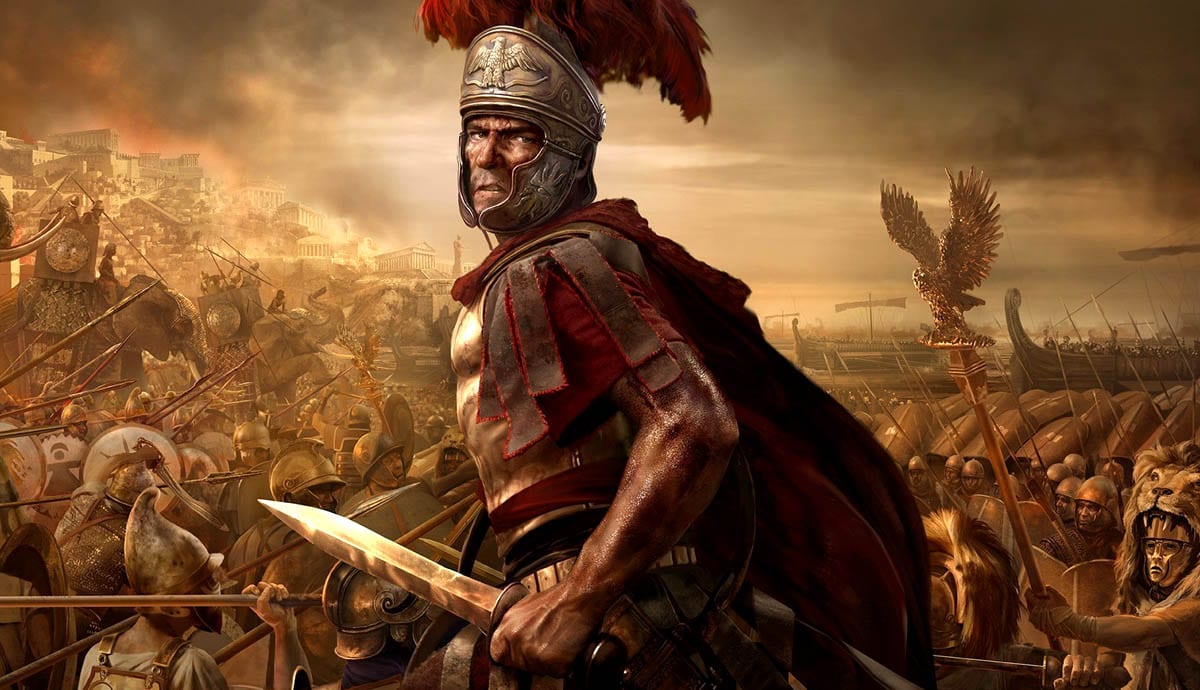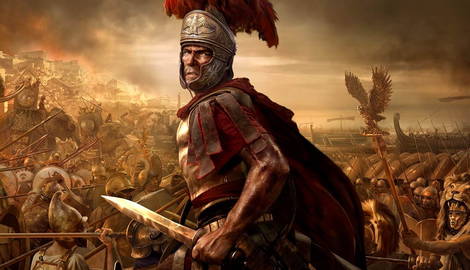
Ancient Rome’s ability to expand its territory to such great lengths was part and parcel of its military might and organization. The city on the Tiber began its rise to prominence over 500 years before the Common Era. And by the turn of the millennium, it had established hegemony over the entire Mediterranean basin. To expand so far and so fast, as well as to retain conquered territory, one would rightly assume that there was no shortage of Roman battles.
This series of stories will highlight four of those battles fought and won by Romans. The first of among them, the Battle of Actium, was set in antiquity; two occurred in Late Antiquity: the Battles of Châlons and Ctesiphon, respectively; and the last battle, technically in Medieval times, was fought by Byzantines, who called themselves Romans, against the barbarian Vandals occupying the ancient city of Carthage in the sixth century.
Ancient Rome’s Ascent In the Mediterranean World

Roman military discipline and organization was unparalleled in the ancient world. And for this reason its forces were able to steamroll across the Italian Peninsula and subdue all native populations therein.
By the 3rd century BC, ancient Rome was secure enough to influence events outside of Italy. In the west, it engaged with the Carthaginians—particularly in Sicily where that colonial empire had a foothold. Accounts of Roman battles spread across the Mediterranean. And by 241 BC, Carthage had been thoroughly outmatched in the First Punic War.
The superpower was forced to sign an embarrassing treaty that forfeited some of its most prized territories to Rome. But, though Carthage was seriously weakened, it was still an adversary. It’s at this time that ancient Rome earned its reputation as a force to be reckoned with throughout the Mediterranean World. And it didn’t hesitate to flaunt this.
After the war, Rome sent an emissary to Ptolemy III, the reigning Pharaoh of Greek-controlled Egypt while the Ptolemaic dynasty still wielded considerable influence in the Eastern Mediterranean. The Romans had made an alliance with his father, Ptolemy II, that ensured Egypt’s neutrality in conflicts between Rome and Carthage.

But it was clear in their dealings with Ptolemy III that the two empires were no longer on equal footing. After a sound victory in the Second Punic War, Rome now a universally acknowledged superpower, this dynamic was exacerbated for the Ptolemies. The Third Punic War was merely a death blow to the Carthaginians.

Thereafter, Rome’s assertion of influence over Ptolemaic Egypt and the theater of the Eastern Mediterranean only increased. And by the time of the late Ptolemies, Egypt had essentially become a vassal state of the Roman Republic. At the turn of the millennium, the entire Mediterranean belonged to what was now the Roman Empire.
Military Organization: The Key to Victory in Roman Battles

Fortified by legendary discipline, the Roman military was organized around legions. Each legion comprised a total fighting force of 5,400 men—a daunting figure. But the organization didn’t end there: soldiers were accounted for down to the octet. At its most fundamental element, the legion was reduced to tent parties. Each was composed of eight men who shared a tent. Ten tent parties made one century, which was commanded by a centurion.
Six centuries made one cohort, of which each legion had ten. The only qualification is that the first cohort consisted of six double centuries, making a total of 960 men. Additionally, each legion had 120 horsemen. So in 47 BC, when Julius Caesar left three of his legions in Alexandria with his pregnant paramour, Cleopatra, he was really leaving behind a force of 16,200 men at her disposal.

Such organization of the military allowed the Romans to allocate resources effectively. It also fostered a culture of discipline and order within the ranks, as well as camaraderie among divisions of the legions. Roman battles were so often won because of this organization.
And while the Romans were best known for their exploits on land, they also fared well in several key naval battles. Most notable among them is the Battle of Actium. It was from this confrontation between Octavian and Mark Antony, the Roman navy against the forces of Ptolemaic Egypt, that ancient Rome secured its possession of the East.
The Battle of Actium

Actium was the last stand for Cleopatra and her crumbling Ptolemaic dynasty. By 30 BC, all of the Hellenistic kingdoms of the Eastern Mediterranean had either fallen to Rome or become one of its vassal states. Until that point, Cleopatra had managed to secure her position and that of her family’s through amorous alliances with Roman generals.
But now she was between her lover, Mark Antony, and the future first Augustus of Rome, Octavian. Their conflict came to a head at the port of a Greek city called Actium, where the Roman navy soundly defeated the forces of Ptolemaic Egypt. In this case, the Romans were victorious at sea. But, largely, the most epic of their battles were fought on land.
The Battle of Châlons falls into this category.
The Battle of Châlons

The showdown between Rome and the Huns, led by the indomitable Attila, took place on a field in Central Gaul. The battle was a decisive, and much-needed, victory for the Romans after the Huns had been infringing on their territory for some time.
Aetius Flavius, the last great Roman of Late Antiquity, was at the helm of the vanguard against the Huns. Before the battle, he had made important alliances with other Gallic barbarians. Most notable among them were the Visigoths. The combined Roman and Visigoth forces put an end to the violent Hunnic incursion in France.
The Battle of Ctesiphon

Also in Late Antiquity, the Battle of Ctesiphon served as the capstone of Emperor Julian’s Persian campaign. Against all odds, of which Asian war elephants were included, he and his forces beat back the army of Shapur in front of the walls of that king’s grand Mesopotamian city.
Julian was inspired by Alexander the Great. And his attempt to push forward and conquer the remainder of Persia after Ctesiphon shows this. But he was unsuccessful. Despite carrying the Romans to victory at Ctesiphon, his forces were starved in southern Mesopotamia and barely survived the return trip to Roman territory.
The victorious Roman Battle of Ctesiphon turned into a costly defeat in the Persian War. And in the process, Julian lost his own life.
The Byzantine Recapture of Carthage from the Vandals

Finally, the Recapture of Carthage also falls into the category of epic victorious Roman battles, despite it (technically) not being a Roman battle at all. At the command of Justinian, the Byzantine emperor, legendary General Belisarius recaptured the Roman city of Carthage from the Vandals—a barbarian tribe from Northern Europe that’s been blamed first and foremost for the sack of Rome.
This history is one of epic reconquest in which the Byzantines regained huge swaths of formerly Roman territory.
As will be recounted in the stories of each of these battles, the military prowess of ancient Rome and its generals cannot be overstated. The Romans gave new meaning to the art of war. Their military legacy has inspired all subsequent world powers and those who lead them, even into the present-day.










